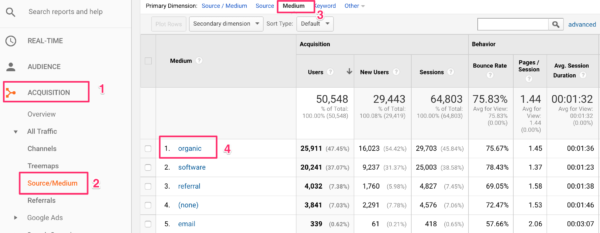Enhance Your Information Analysis Utilizing Additional Dimension in Google Analytics
Discovering the abilities of additional dimensions in Google Analytics opens up a world of possibilities for refining data analysis. By layering extra dimensions onto primary information collections, an even more elaborate narrative arises, shedding light on individual communications and performance indications.
Recognizing Secondary Measurements
Secondary dimensions in Google Analytics refer to additional criteria that can be included to the key dimension, enabling for a more thorough evaluation of information (Secondary Dimension in Google Analytics). By including secondary dimensions, analysts can section and filter data to uncover patterns, trends, and correlations that could not be evident when looking at the data as a whole.

Benefits of Making Use Of Secondary Dimensions
When assessing data in Google Analytics, the usage of secondary dimensions offers important insights into individual habits and efficiency metrics. By adding an additional measurement to your main information, you can delve much deeper into the qualities of your web site site visitors and their interactions.
Furthermore, additional dimensions boost the context of your key information, supplying a more detailed view of individual interaction and efficiency metrics. Overall, the use of second measurements in Google Analytics can considerably boost the deepness and high quality of your data evaluation, leading to more educated decision-making and improved results.
How to Include Additional Measurements
By including secondary dimensions in Google Analytics, individuals can obtain much deeper insights right into their data evaluation procedure, allowing for more comprehensive analysis of user behavior and performance metrics. Adding second dimensions is a simple process that can significantly boost the deepness of evaluation. When in the record, locate the "Secondary dimension" tab above the data table.
Studying Information With Additional Measurements
Using additional measurements in data analysis offers an extra extensive understanding of individual habits and performance metrics. By adding an additional dimension to your primary data set in Google Analytics, you can dig much deeper into the attributes of your site site visitors and their communications. Incorporating the key dimension of 'source/medium' with the secondary measurement of 'touchdown web page' can disclose which specific web pages are drawing in web traffic from different sources, aiding you enhance these pages for better engagement.

Essentially, evaluating data with second dimensions encourages you to obtain beneficial understandings into customer actions, determine fads, and make informed choices to enhance the performance of your digital residential or commercial properties.
Finest Practices for Additional Dimensions
In information analysis, incorporating secondary dimensions effectively can substantially enhance the depth of understandings derived from metrics and customer behavior patterns. When making use of secondary dimensions in Google Analytics or any various other analytical tool, it is critical to stick to ideal practices to make certain the precision and significance of the information analysis.
One key ideal practice is to carefully choose second measurements that enhance the key dimension being analyzed. Choosing additional dimensions that offer additional context or additional segmentation can offer a much more extensive understanding of the data. It is additionally vital to prevent overcomplicating the evaluation by including a lot of second dimensions, which may cause complication or dilution of insights.
Additionally, it is advisable to try out various mixes of primary and second measurements to reveal brand-new relationships and patterns. Frequently fine-tuning the selection and reviewing of secondary dimensions based upon the specific goals of the evaluation can result in more workable understandings. By following these best practices, Visit Website information experts can take advantage of additional measurements effectively to enhance the total data evaluation process and decision-making capacities.

Conclusion
Finally, integrating secondary measurements in Google Analytics is vital for an extensive data analysis approach. By leveraging second measurements along with primary ones, analysts and online marketers can reveal important understandings and relationships that can inform decision-making and optimize digital marketing methods. Recognizing just how to efficiently utilize secondary measurements and following best methods will certainly allow professionals to draw out purposeful data and boost their general efficiency metrics.
Additional measurements in Google Analytics refer to additional criteria that can be included to the key measurement, enabling for a more comprehensive analysis of data. By including secondary dimensions, analysts can section and filter data to reveal patterns, trends, and connections that may not be noticeable when looking at the data as a whole. Combining the news main dimension of 'source/medium' with the secondary dimension of 'touchdown page' can expose which details pages are bring in website traffic from different resources, assisting you maximize these pages for far better interaction.
One secret finest technique is to carefully select secondary measurements that enhance the main dimension being evaluated. By following these ideal techniques, information analysts can leverage second measurements effectively to improve the overall information analysis procedure and decision-making capacities.